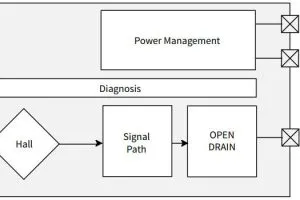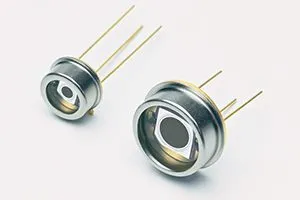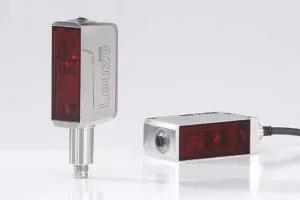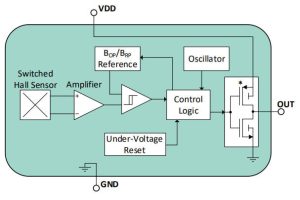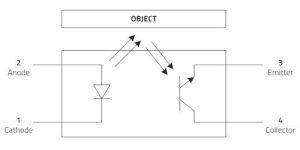
These are simple devices, with an infra-red emitter and a photo-transistor, both facing upwards, but work at an unusual wavelength.
“These contain both emitters and detectors for 940nm wavelength,” said the company. The “sensors filter out visible light up to 800nm, rather than just up to 700nm, so they are less susceptible to errors occurring under artificial lighting.”

1642730961200 (left) is in a gull-wing package with a 4.6 x 3.4 footprint and 1.5mm height.
It is intended to sense from 0.2 to 5mm (1mm nominal), for example acting as a tough switch behind glass sheet.
Forward voltage is typically 1.2V (1.6V max) and the transistor will typically pass 300μA (100μA min) – all measured with 10mA though the LED according to the data sheet.
1692010961200 (below right) is in smaller (2 x 1.6 x 0.75mm) lead-less package with a narrower beam angle that can detect objects between 0.5 and 10mm.
It is “more robust against cross-talk than a simple touch switch – when used under glass, for example”, said Wurth.

Forward voltage here is higher – 1.7Vtyp and 2.5Vmax, as is transistor current: 500μAmin and 1mAtyp – all measured with 5mA though the emitter.
Why the current and voltage difference?, asked Electronics Weekly.
“1642730961200, the larger part, uses LED chip as emitter. 1692010961200, the smaller part, uses VCSEL [laser] chip as emitter and needs higher voltage to run,” replied Wurth. “Also, because it [the laser] is a low power consumption part we use 5mA instead of the 10mA testing current for specification, but it can also operate at a bit higher currents according to datasheet.”
As well as in touch switches, applications are foreseen in optical encoders, switches, interlocks and object detectors.
Find the reflective opto sensor web page here
 Electronics Weekly
Electronics Weekly
